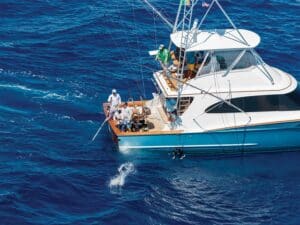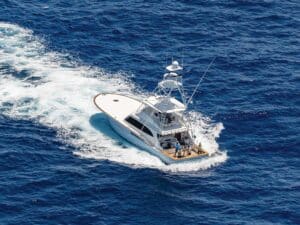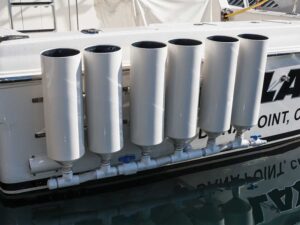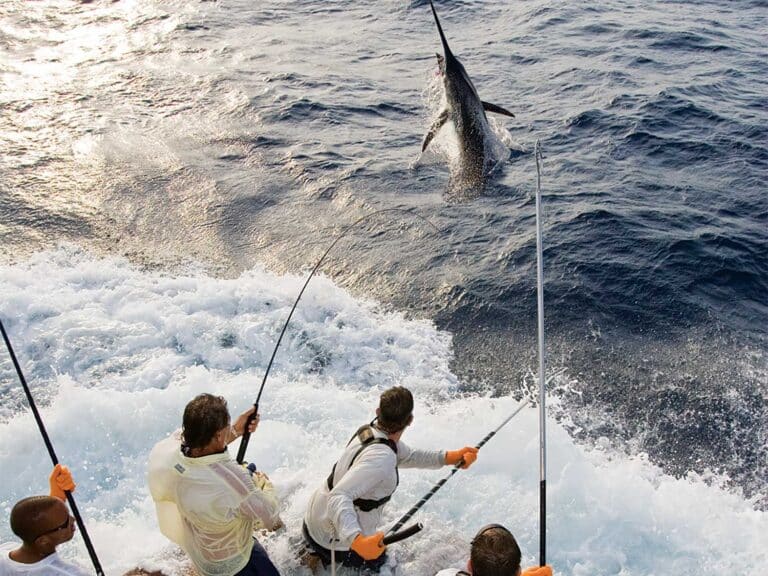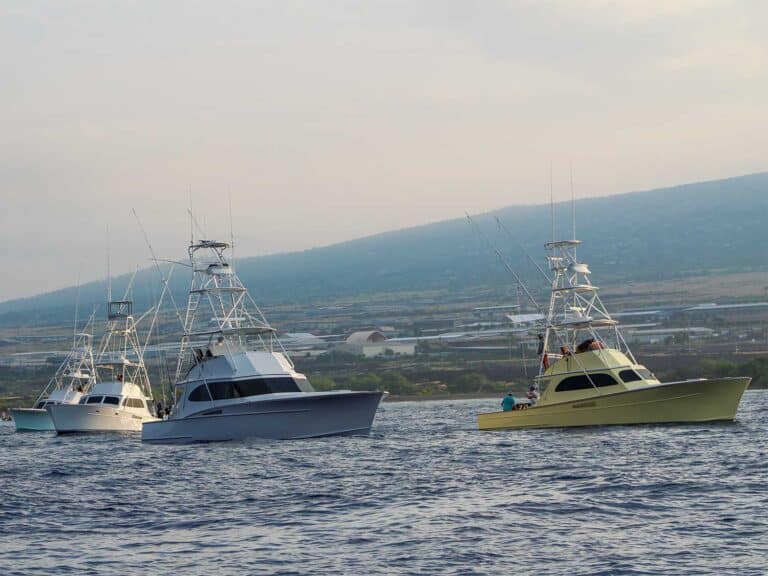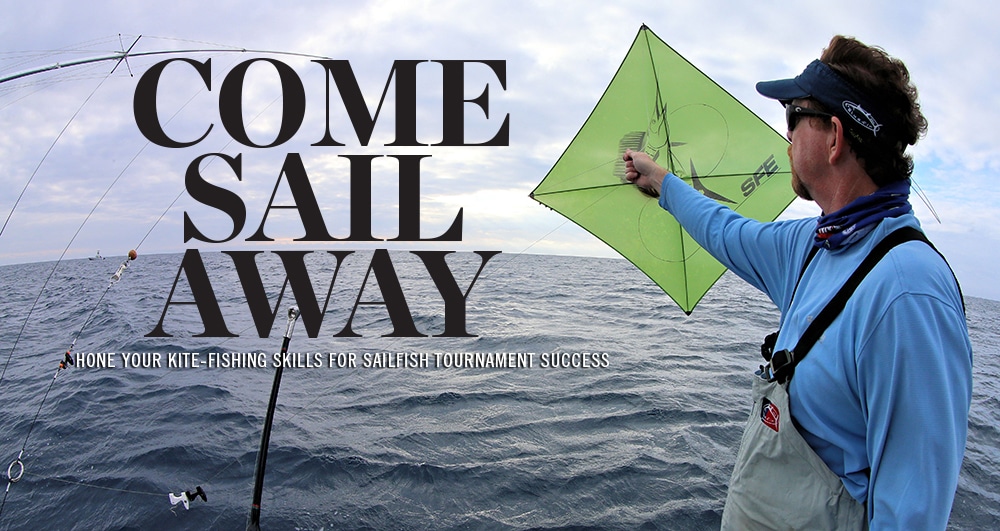
Those of us who love fishing for billfish often find a great deal to disagree about when tactics and strategies are discussed, but we agree almost unanimously that the bite constitutes the best part of our sport. That brief moment makes it all worthwhile, no matter whether you’re targeting giant black marlin in Australia, blue marlin in St. Thomas or sailfish in South Florida. Watching a lit-up billfish attack a bait keeps us coming back.
An Unofficial Geographic-Demarcation Line
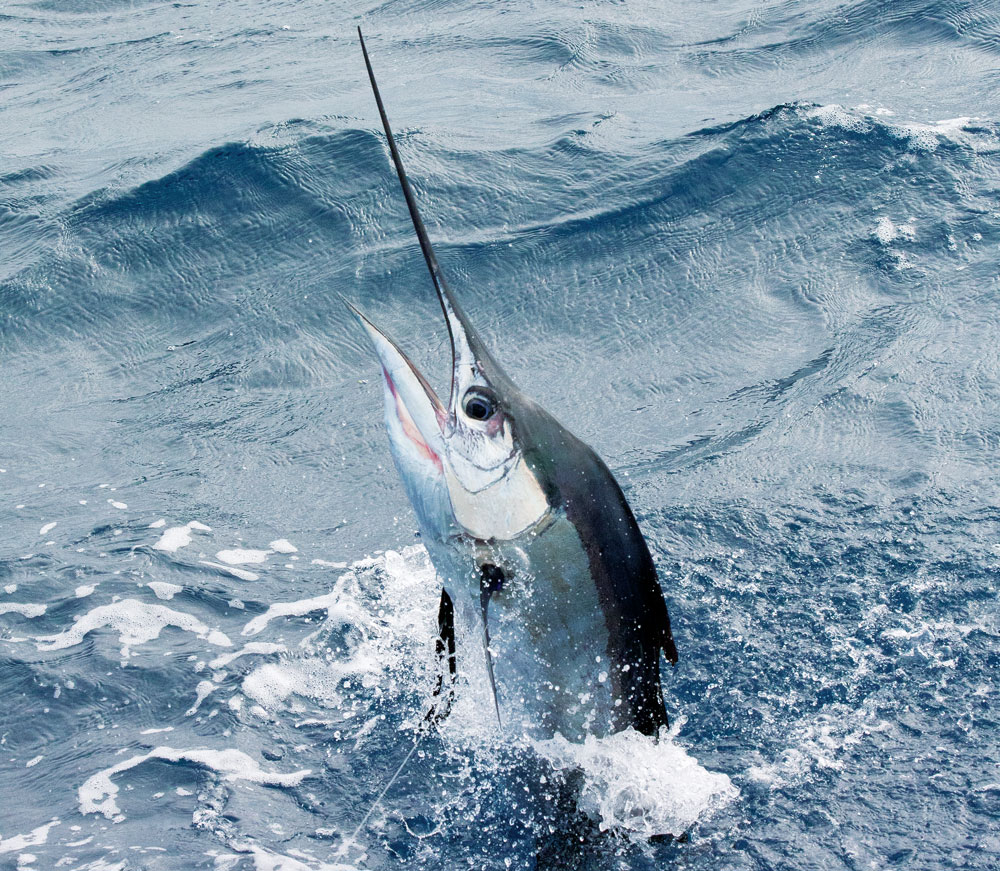
When targeting those South Florida sails, fishermen fall into one of two distinct camps: You’re either a live-baiter or a dead-bait troller. An unofficial geographic-demarcation line separates the two camps. North of the Palm Beach/Martin county line, most captains pull dredges and troll naked ballyhoo, and those south of the line use live bait. That line blurs from time to time, but it holds true in most instances. The distinction is due to custom and preference only, not any sort of law.
Those who use live bait have many methods from which to choose, including fishing baits from the outriggers, fishing them deep with breakaway leads, or even casting to sailfish spotted tailing down-sea with spinning rods. But the most tried-and-true method involves dangling frisky baits from above, on fishing kites.
Ancient Roots
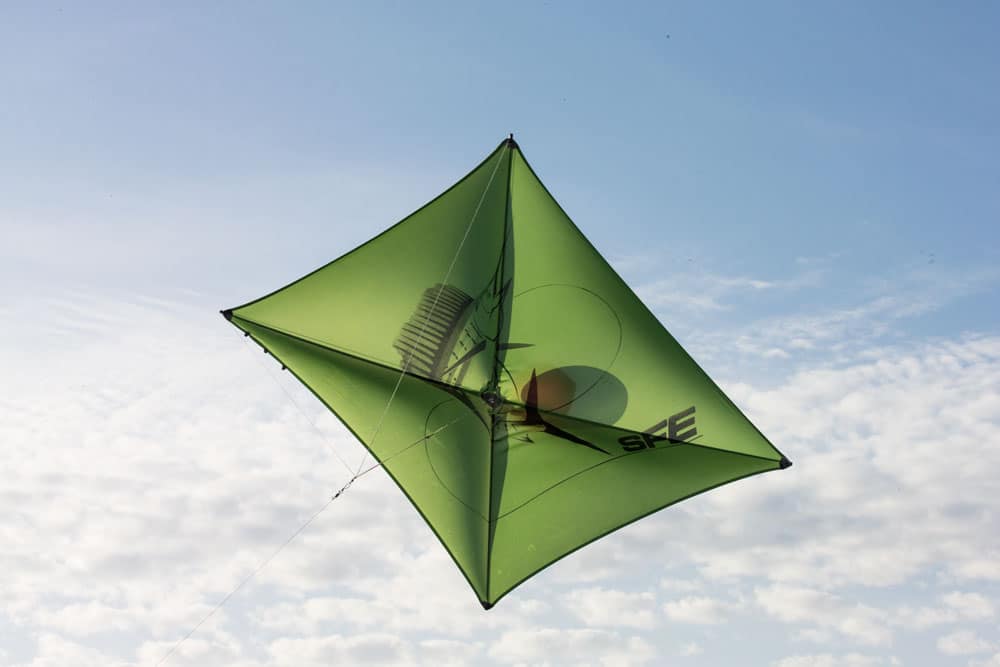
Kite-fishing has its roots in antiquity as shore-bound ancient Polynesians reportedly crafted homemade kites to carry baits away from the beach to where eating fish could be caught. As for what we now know as modern kite-fishing, legendary skipper Tommy Gifford of Pier 5 in Miami often gets credit for first using kites off South Florida, but kites played significant early roles in Southern California fishing and in the Northeast as well. As with most practices in our sport, proving who did it first would be problematic at best.
In the early days of kite-fishing in the 1930s off Florida’s Palm Beach area, so many sailfish swam offshore that captains hung dead baits off kites and caught a ton of fish. The “throat latch” of a mullet served as the bait of choice for many of the boats targeting sailfish, and it worked extremely well. But as fishing pressure increased following World War II, the fish began to refuse the dead-bait offerings, and innovative anglers turned their attention to live baits.
Bait Experimentation
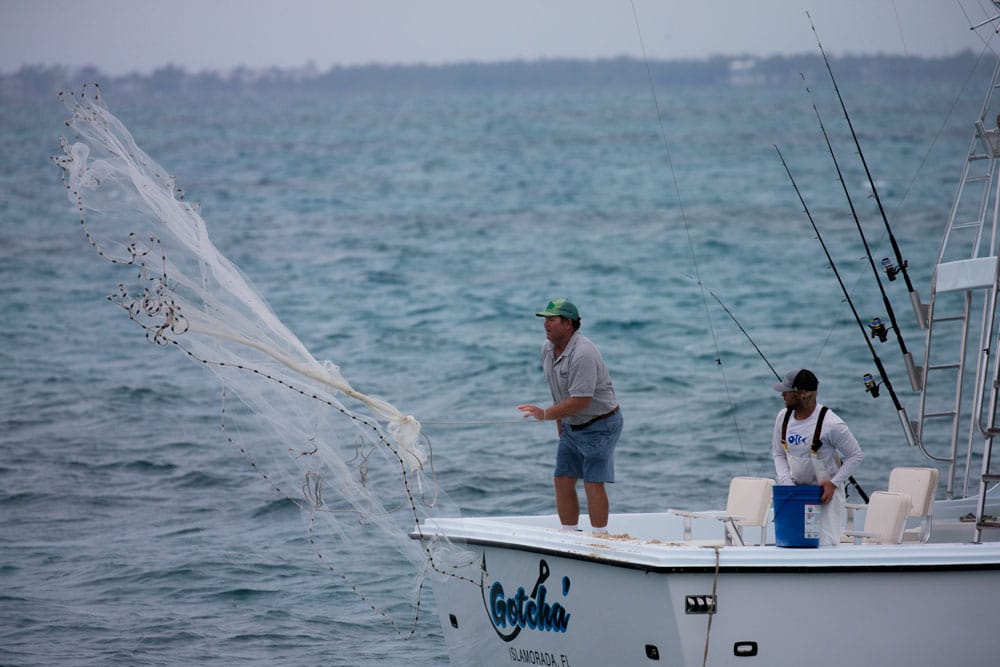
Mullet and blue runners first served as bait, along with pinfish, live ballyhoo, pilchards and whatever else captains and mates could catch. Most worked quite well, depending on weather conditions. But the fishery changed again as the sailfish population decreased due to long-lining and a reduced bait supply from commercial net fishing along the East Coast from the 1970s to the 1990s. Fishing got tougher.
By the 1980s, sailfish anglers had discovered the diminutive baitfish known as the bigeye scad, commonly called the goggle-eye. These hardy baitfish live in tropical seas worldwide, and sailfish love to eat them. This combination propelled them to the top of the list of favorite sailfish live baits for kite-fishing.
Perfecting the Craft
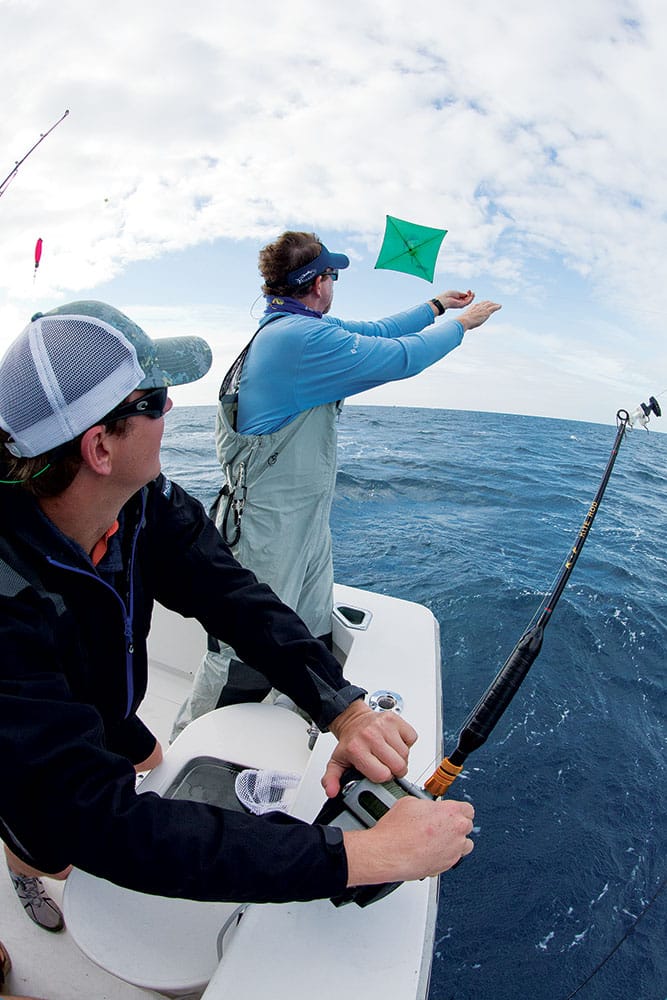
Perfecting the Craft
Kite-fishing involves suspending baits from release clips positioned at intervals along the line leading from the kite reel on the boat up to the kite flying behind or off to the side of it. Most skippers fly two kites with three release clips each. They keep the kites separated behind the boat by crimping one or more split-shot lead weights on the outside edge of each kite, which causes them to fly in opposite directions.
Adjustment is Key
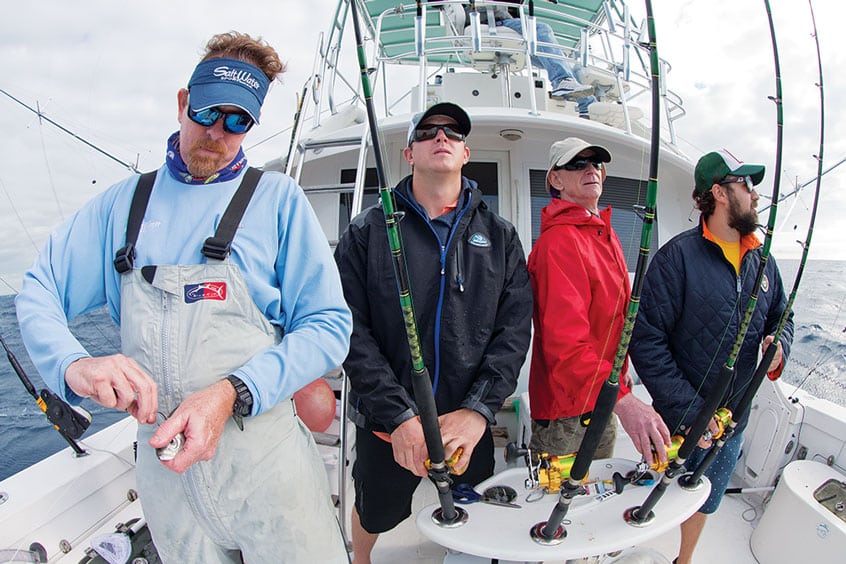
By continually adjusting your line as the kite rises and settles with the wind, you can keep your bait right at the surface, thereby keeping all or most of your leader out of the water, in the air, where fish can’t see it.
The Strike Can Be Spectacular
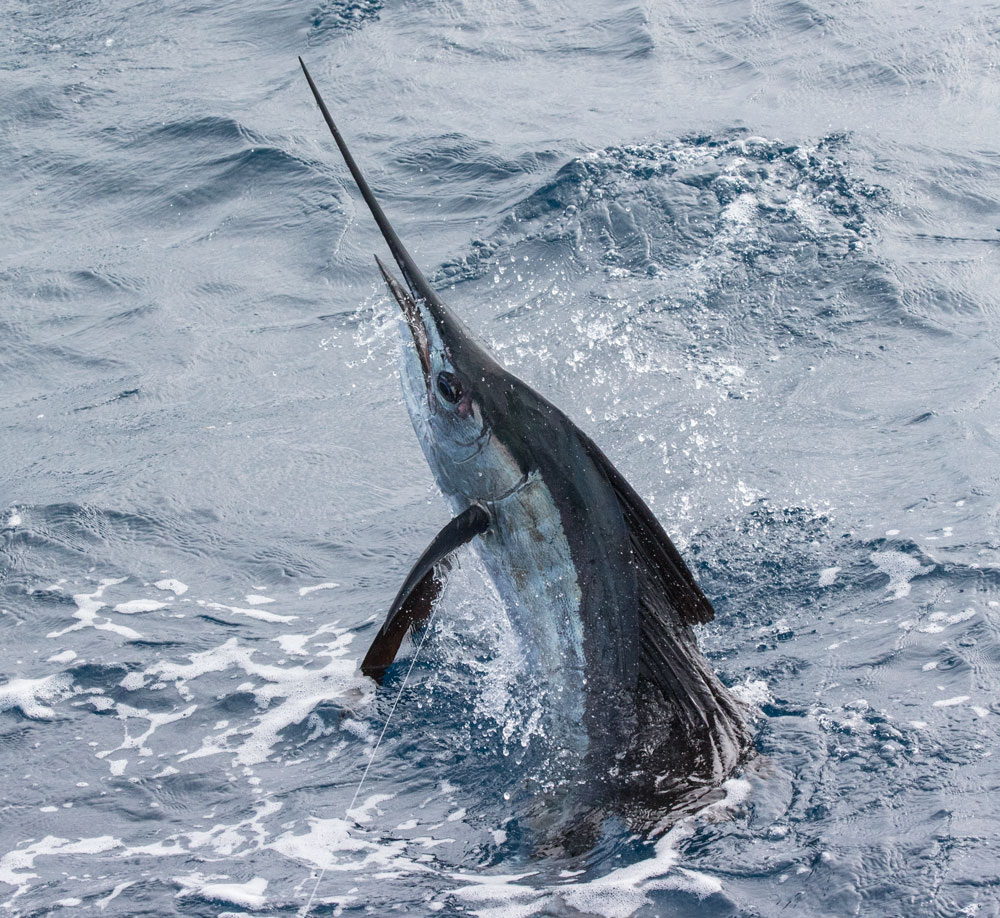
And that’s where the bite part comes in: With a bait on or near the surface, you often see the strike, and it can be spectacular.
Bridling Bait
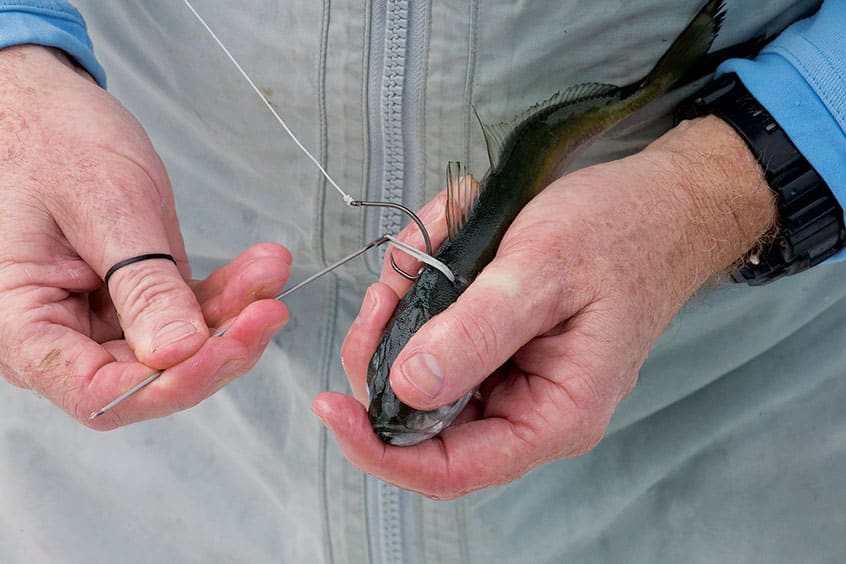
Baitfish get bridled to circle hooks, sometimes through the eye socket and sometimes through the back just forward of the dorsal fin. In the past, mates rigged with bridles tied from waxed loops made of dental floss or waxed twine, but most savvy anglers now use rubber bands drawn through with rigging needles. Bridling in the back allows the baits to hang beneath the kite in a more natural state as long as the boat doesn’t move too much.
Stay Still
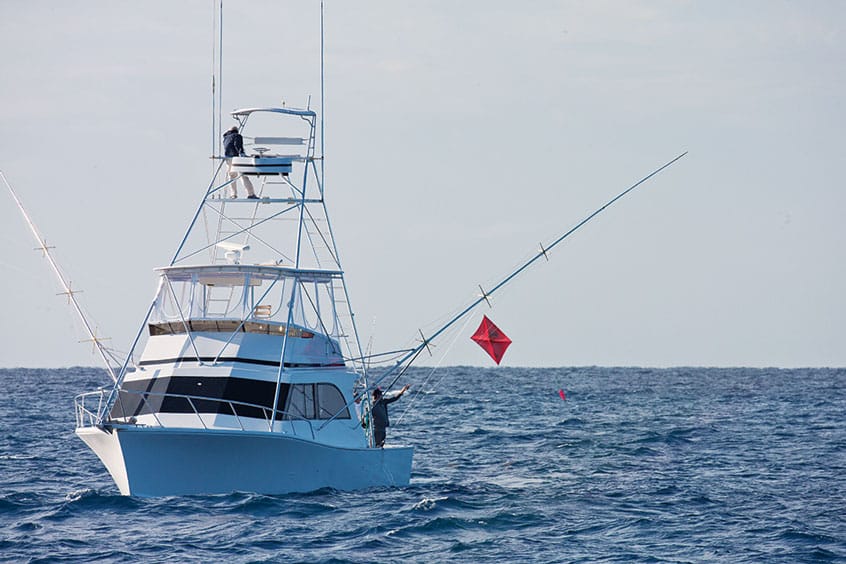
You want the boat to remain as motionless as possible, allowing the baits to swim naturally. If you move too fast, you drag the baits through the water and make them appear unnatural to passing predators. Captains with trolling valves use them to keep the bow of the boat into the wind while keeping actual forward motion to a minimum. You can also do this by bumping in and out of gear, although that creates a “thunk” each time you shift, which sailfish probably don’t like.
Alternative Baits
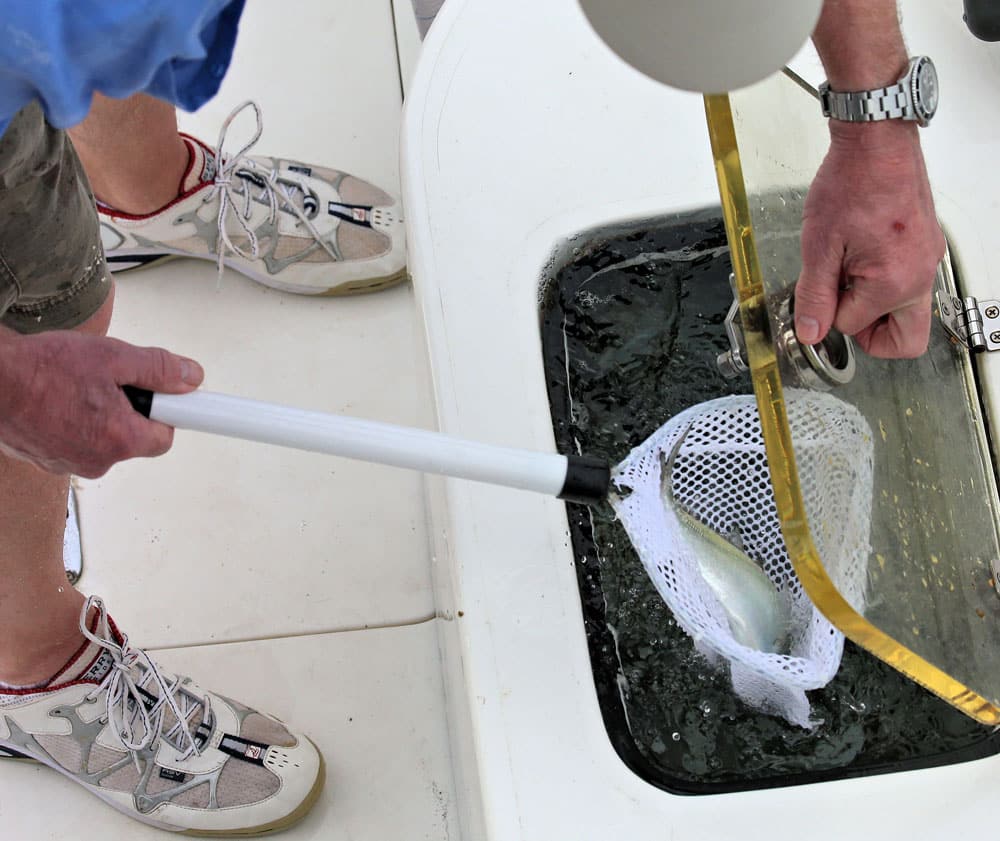
While the goggle-eye has become the bait of choice, it’s by no means the only effective bait. Different sea conditions can call for a change of baits sometimes. Other effective baits include cigar -minnows (round scad), Spanish sardines and threadfin herring. Smaller baits work best when it’s calm as they tend to get tossed around a lot when it’s rough, but they can be quite effective when fished on kites in the right conditions.
Different Kites for Changing Conditions
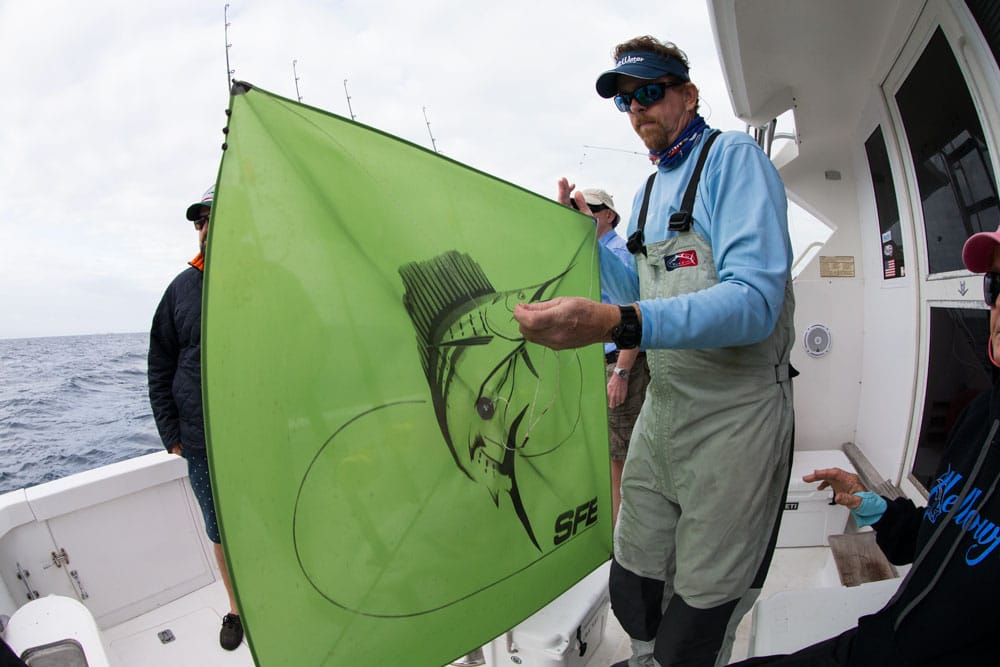
Those conditions often dictate which kite you use too. Most kite manufacturers build several models of kites for use in specific wind velocities. Light-wind kites have thicker fabric to catch every breath of wind, for example, while heavy-wind kites for use in 20 to 25 knots of wind or more come with holes in them to allow strong gales to pass through and not damage the kite or kite line.
When there’s little or no wind at all, anglers rely on large helium balloons to keep kites aloft. Sometimes you have to move the boat forward a little in a no-wind situation because if you don’t, the helium balloon will cause the kite to fly directly above your boat, not the ideal fishing arrangement. Interestingly, there’s a worldwide shortage of helium at the moment, making this once-common gas a precious commodity.
Avoid The “Kitemare”
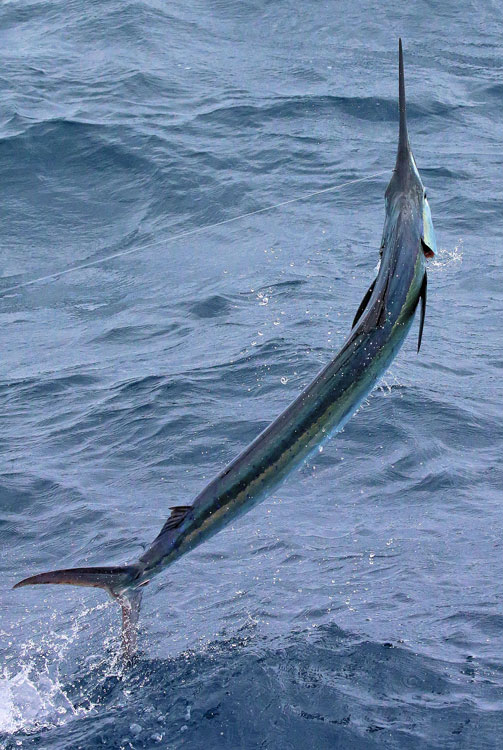
Kite-fishing takes a lot of practice. When you first get into it, you will likely experience what experts call a “kitemare” at some point. Kites sometimes crash into the sea — which is why you tie a small balloon on the back of them so they don’t sink — or they wrap around outriggers and/or antennas, forming spectacular knots, or they fly together into inextricable tangles. It’s all part of the process, but these phenomena become less common with practice, and it will all be worthwhile when you begin catching more sailfish. And that surface bite when a pack of hungry fish pile onto your baits will make you forget all about any prior inconvenience.

